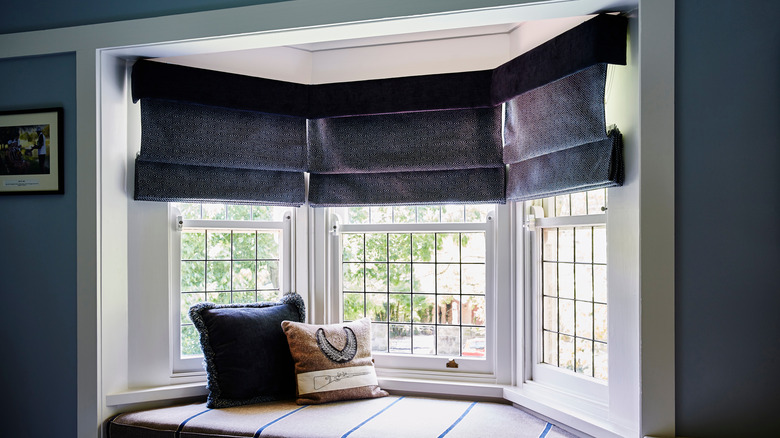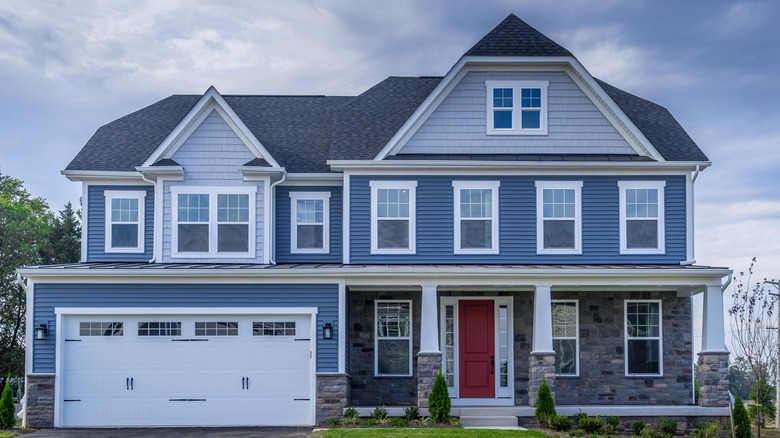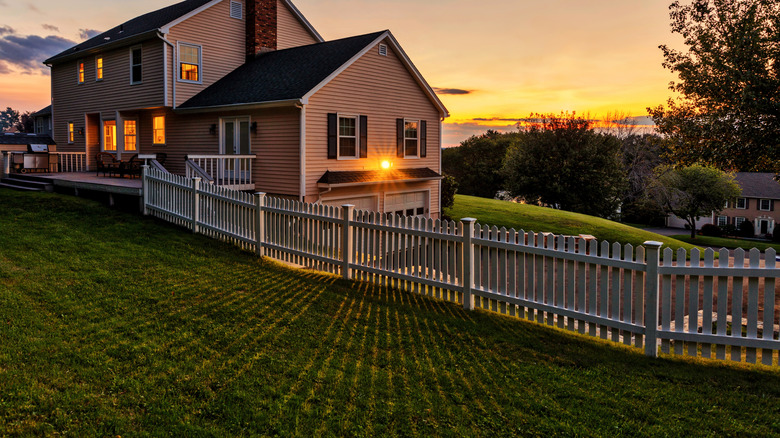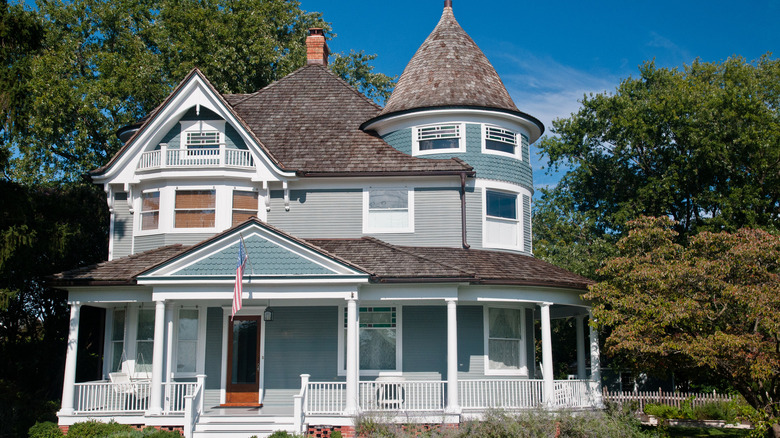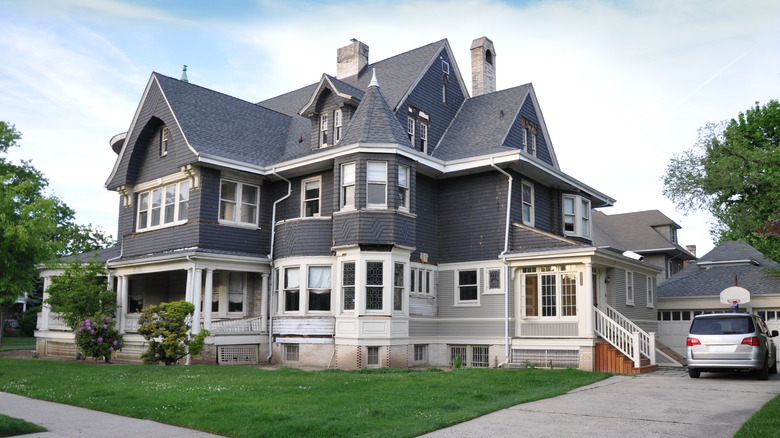Colonial Vs. Victorian Homes: What's The Difference?
As architecture and home aesthetic lovers know, there are a variety of home styles in the contemporary real estate landscape. These home styles include but are not limited to Cape Cod, contemporary and farmhouse-style abode constructions, as pointed out by Rocket Mortgage. While architectural diversity remains the case in much of the real estate world, two home styles, in particular, remain beloved across the Americas. Property owners mainly choose homes that highlight colonial-style and Victorian-style structural elements in the United States, parts of Latin America, and the broader Caribbean region. And because each home style has its own history, cultural, aesthetic, and construction-based connections besides particular structural elements, each of these home styles shines in its own way.
Admittedly, colonial-style homes and Victorian-style homes share some similarities; one commonality is their centuries-long history. The second most important similarity is a construction style containing largely European elements. But, this timeline and genesis links do not erase the visual differences present in both property styles. Keep reading to find out how Victorian- and colonial-style homes differ.
Colonial-style homes
Colonial-style homes trace their architectural lineage to the U.S. colonial period, as My Domaine noted. As Britannica detailed, the American colonies were British possessions established during the 17th and 18th centuries, mostly alongside coastal properties in today's U.S. eastern region. As a result, many colonial-style homes reflect decidedly English architectural sensibilities.
Visually, these homes display minimalist tastes, symmetry, and a rectangular shape; however, Colonial-style homes can also be square-shaped. As pointed out by Dejesus Industries, it is common for colonial homes to have centered entrances and Greek-style columns. In a broad sense, colonial-style homes may range from one story to three stories and also include fireplaces.
Different types of colonial-style homes
Of course, as time went by, people found different ways to alter the original appearance of a Colonial-style home, resulting in a variety of colonial-based home styles today. Some of these home types include Spanish elements and techniques, and some allow the British, Dutch, or French styles to rock. As Rocket Homes notes, these styles were created by colonists from various countries to replicate the style of their dwellings back home.
For instance, French colonial houses are prevalent in Louisiana and Illinois, while Spanish-style colonial homes are mainly found in Florida and the west coast of the United States. However, no matter where they are located, these residences include symmetrical architecture and floor plans, pitched roofs, and chimneys for the obligatory fireplace. They also boast decorative entryways with pediments or columns for a more striking look. In addition, colonial-style homes are usually bordered by careful landscaping outside, as the landscaping tends to track the visual proportions of the homes, The Spruce notes.
Victorian-style homes
Victorian-style homes tend to reflect monarchy-based histories instead of specific settler patterns in the Americas. According to Dejesus Industries, these houses are similar to castles, usually being tall and slender in construction, with asymmetrical features, cylindrical turrets, and detailed trims and moldings.
My Domaine notes that European people from upper-class backgrounds preferred this home style in the mid-to-late 1800s, throughout Queen Victoria's reign in the United Kingdom. The Victorian-style residence is an imposing stone and wood construction, having two to three stories and highly decorative elements. Foxtons also mentions that some homes built according to this architectural style include terraced housing, stained glass windows, and brickwork porches.
Colonial vs. Victorian-style homes
Colonial and Victorian-style homes have plenty of distinctions. For example, colonial-style homes appear crisper, while Victorian-style homes appear more ornate. In addition, as per Realtor Foster, colonial-style homes include several architectural types, such as First Period English, French Colonial, Colonial Revival, Dutch Colonial, and Spanish Eclectic styles. On the other hand, Victorian-style homes include Second Empire, Queen Anne, and Richardsonian Romanesque architecture styles.
While colonial-style residences appear simpler and sharper in tone, Victorian-style homes are painted from vibrant hues to dark shades, reflecting the height of the 1800s fashion. On the inside, Victorian homes are as ornate as on the outside, with high ceilings, intricate detailing on doors and windows, and luxurious chandeliers. On the other hand, colonial-style residences are simpler, with one or several fireplaces, grid-like windows with colored shutters, upstairs bedrooms, and spacious attics.
